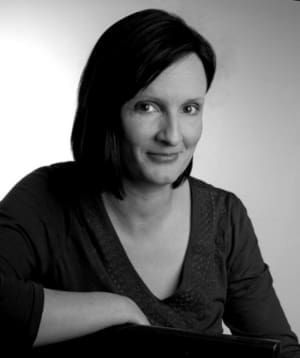In a recent episode of the PBS news series Now, host David Brancaccio interviewed Mayor John Fetterman of Braddock, Pennsylvania, an economically depressed area that has been abandoned by so many of its residents that it was used as a location for the post-apocalyptic film The Road. Fetterman moved to Braddock in 2001 as a youth worker and ran for mayor in 2005 in an effort to restore the town from a dying wasteland to the thriving community it was at the turn of the 20th century, as the home of one of Andrew Carnegie’s steel mills and the first of nearly 1,700 libraries Carnegie built in the United States.
In the interview, Brancaccio brought up Fetterman’s efforts to attract new residents, “young, vibrant, innovative people” who would likely otherwise move to a hip urban area, but might be lured to struggling communities by lower housing prices and “the possibility of interacting with others who have interesting ideas.” Fetterman agreed, “Absolutely, artists have been one of the cornerstones of people that we’ve been recruiting, I think in part because they can see value in a condition or a circumstance or a place where others haven’t, and that’s been the story of revitalization in neighbourhoods.”
During the time in which Braddock was prosperous, Thornton Wilder wrote the classic North American play about small town life in Grover’s Corners, New Hampshire—Our Town. The ghost of the play is prominent in a new program proposed by Rocco Landesman, longtime theatre producer and the new chairman of the United States’ National Endowment for the Arts (NEA), in the NEA’s Appropriations Request for Fiscal Year 2011. In it, a new $5 million budget line was added for Our Town, “a small but significant program that we believe, over time, will profoundly change the country by helping to revitalize and improve the livability of communities, provide joy and inspiration, and restore a sense of pride and community spirit.” The request offers an example:
Take a look at Paducah, Kentucky with its population of 26,000. In 2001, the City of Paducah invested $40,000 in the arts to revitalize the downtown by offering artists affordable real estate, financial incentives, relaxed zoning laws, and marketing support. Today, the Lowertown area of Paducah has an occupancy rate of at least 90%, and arts audiences in the Greater Paducah area spent nearly $28 million when visiting local arts events in 2007.
The report doesn’t mention that those who experienced art in Paducah (and elsewhere) had lives that were richer, as well as communities that were richer.
The trend toward investing in the arts for the revitalization of neighbourhoods, towns, and cities grew from the work of urban theorist Richard Florida, author of the bestselling The Rise of the Creative Class (Basic Books, 2002). He suggests that economic and social revitalization can be achieved through attracting artists and other creative professionals to struggling areas, and creating the environment and amenities that would retain them. It is not a new idea, but the popularity and accessibility of Florida’s books, and his compelling data, have resulted in many cities launching new initiatives to create arts districts and community arts development plans. The most comprehensive of these is in Toronto—a city that was so enthusiastic about Florida’s ideas that they lured him to the faculty of University of Toronto. The city’s Creative City Planning Framework is a huge undertaking designed to invest heavily in creativity to face “increased competition from other cities moving aggressively to position themselves as world creative cities—London, New York and Berlin; important second-tier cities—Montreal, Austin, Texas and Providence, Rhode Island, to name a few.”
The area of government and public policy that is concerned with the arts and other cultural institutions is called cultural policy. Could the church have a role in cultural policy, particularly in the revitalization of communities—the very Kingdom work into which we believe we’re called?
Churches were once the hub of community life. At the beginning of Our Town, the narrator character, the Stage Manager, gives the audience a tour:
Well, I’d better show you how our town lies. Up here is Main Street. Way back there is the railway station; tracks go that way. Over there is the Congregational Church; across the street’s the Presbyterian. Methodist and Unitarian are over there. Baptist is down in the holla’ by the river. Catholic Church is over beyond the tracks. Here’s the Town Hall and Post Office combined; jail’s in the basement. Along here’s a row of stores. Here’s the grocery store and here’s Mr. Morgan’s drugstore. Public School’s over yonder. High School’s still farther over.
Although the church is central among the institutions that make up Grover’s Corners, it is not found in the NEA’s Our Town. The NEA document specifies that all programs given Our Town funding must include “Partnerships, such as with public entities (e.g., cities, libraries, universities) and private entities (e.g., foundations, business owners, community organisations).” Perhaps “community organisations” implicitly includes churches, but who could blame the NEA for assuming that churches would not come forward as allies, after the “culture wars” of the 1990s that nearly resulted in the agency’s elimination, and more recent efforts to reduce or abolish arts funding by conservative politicians?
Even if the omission is simply the nature of a government budget request, other writings on community arts development contain no significant expectation or suggestion of the church’s involvement. However, churches are among the best possible “community organisations” to become formal and informal partners with arts organisations, businesses, government agencies, and others working for the renewal of their communities.
Churches have many valuable assets they could contribute to creative community development—three correlate directly with three uses of the word “church”: an event, a body of people, and a building.
Many churches are creating new arts programs around a revitalized sense of the value of creative expression in worship and spiritual development. Some hire professional-calibre musicians from their communities to lift the level of artistry in their worship services, creating jobs for artists. Other churches hold concerts and art exhibitions, produce plays, and offer arts classes for their children. Is the community being invited into these events in your church, and are the events being thought through and executed in such a way that the community would want to experience them? Or would someone from the community feel excluded and confused?
Churches are also encouraging their members to engage with local artists and arts organisations as patrons, donors, and volunteers. Those with skills like accounting, marketing, business management, and legal consulting have become valuable board members, and in that position have some influence over managerial and programming decisions. Are your church’s members participating in the cultural life of your community? Or are their lives so insular that they’re rarely seen outside their homes, schools, and church buildings?
Affordable workspace is one of the greatest challenges for artists and arts organisations. Artists have utilized church spaces to hold music lessons, acting classes, and theatre rehearsals. Small investments by churches in equipment have broadened the use of empty Sunday School rooms into classrooms and studios for visual art and dance. Performances, book groups, and recitals have been held on weeknights in church sanctuaries. Does your church building sit empty six and a half days each week? Or is it, itself, an arts centre?
But perhaps the greatest contribution the church can make to creative community development is our very reason for existence—love. Because of our Creator’s love for us and our love for him, we gladly co-labour with him toward the building of his Kingdom. We know that there is more to a thriving community than economic prosperity, hip restaurants, and storefront galleries. Community is about loving people and seeking their well-being—spiritual, physical, and emotional, as well as economic.
One complaint against the Richard Florida-esque economic revitalization movement is that it can give more to people who already have plenty. The economic upswing that accompanies the influx of creative people and businesses can drive out an area’s original residents—often lower-income people and immigrants who are then forced further to the margins of society, damaging their quality of life as it is improved for others. Christians could enter the conversation from a stance of love rather than gain, reminding politicians, business owners, and artists of a larger goal, and insuring that opportunities are available for all, not just the cool.
Cultural renewal is Kingdom work, but Christians are not the only people who seek it. By becoming partners in the movements going on around us, we can lovingly enrich our neighbours’ lives and give them a glimpse of the New Jerusalem.
In Our Town, the main character, Emily, asks the Stage Manager, “Do any human beings ever realize life while they live it?—every, every minute?” He replies “No.” Then he thinks again and adds, “The saints and poets, maybe—they do some.” Christians and artists, it appears, could be natural allies.


